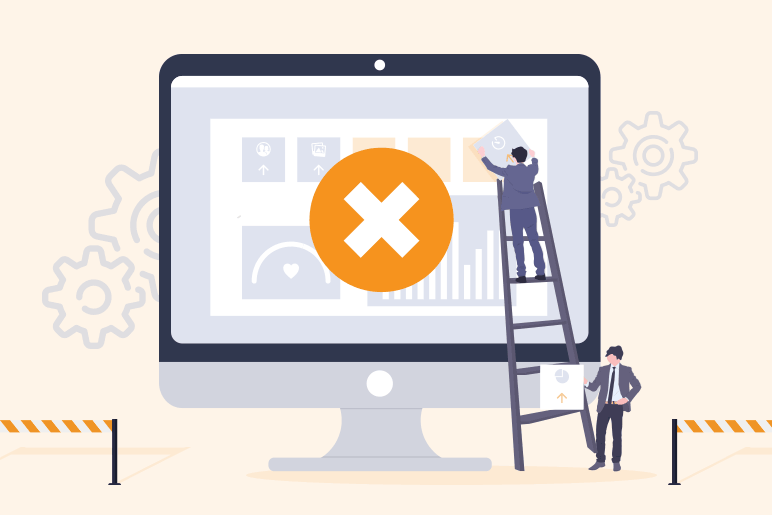Guest post by Addteq
Originally posted by Jaikishan Daryanani on January 4, 2021
It’s a universal truth that IT systems are prone to downtime. They could be frequent and lengthy depending on several factors which will be discussed here. During downtime, business-critical systems are interrupted, leading to a significant reduction in the ability to generate revenue for a company. The financial losses associated with outages escalate if the business takes longer to fix them. So, let’s discuss what is the cumulative loss related to downtime and how can it be minimized.
Some Facts about Downtime
- Revenue losses run into billions each year.
- An average of 10 hours per company per year is downtime taken for our consideration.
- Reduction in Inability to generate revenue.
- Post downtime, the Recovery Time is often ignored in strategic calculations. During this Recovery Time, the ability to generate revenue may not be as low a downtime but it is significant enough to put a dent in the bottom line.
An efficient way to overcome the above pitfalls is through the adoption of a better system and data protection and recovery strategies.
Another important aspect is the robustness of data protection policies. Organizations often focus their efforts on backing up data securely, while neglecting to consider how quickly they can recover their data in the event of a failure. This ‘speed of recovery’ is a good starting point for businesses planning or re-evaluating their disaster recovery needs. And for the most critical systems and applications, a high availability solution should be considered to minimize system and application downtime.
Revenue-generating potential and size of the organization of a particular segment play an important role since their contribution to downtime loss could be highest in spite of having the least levels of an outage. Based on several studies and research, data shows that the total outage is composed of Downtime and Recovery Time, averaging about 8-10.5 hours in total. Hence the ability of the system to have the least possible “Downtime” and the lowest “Recovery Time” defines its effectiveness.
A study by Coleman Parkes Research Ltd on different sectors over different continents revealed the following.
- The retail sector as a whole is hit significantly hardest by IT downtime, losing approx $18.18 billion per year, followed by the public sector ($4.46 billion lost per year). The manufacturing sector was affected the least by IT outages, losing $1.57 billion through lost revenue.
- The average North American organization loses over $150,000 a year through IT downtime. This was less than half the revenue loss of European organizations, the average of which lost just under $350,000 a year. The primary reason for this is that the duration of IT outages in Europe was longer.
- Revenue loss per company was highest for financial institutions ($224,297 per year) and lowest for the public sector ($99,094).
- Each service outage cost North American companies 4.5 hours of downtime and 3.4 hours of recovery time (the length of time it took between the systems and applications coming back up and all data is fully recovered and available). This compared favorably to European companies which experienced on average 6.2 hours of downtime and 4.1 hours of recovery time.
- Although the public sector experienced the longest periods of downtime per outage at 5.9 hours, the time it took to recover data following an outage was actually shorter than the finance and manufacturing sectors. The retail sector experienced significantly shorter periods of downtime and recovery time than the other three sectors: a total of 3.8 hours compared to 8.4 for the public sector, 9.4 for finance, and 9.9 for manufacturing.
- Small companies suffer the most during periods of downtime, showing the least ability to generate revenue (39% compared to 19% for medium-sized companies and 28% for large companies).
- During downtime, the public sector estimated that its revenue-generating potential dropped by 42%. In the manufacturing sector, however, downtime was estimated to have less of an effect: just 20%.
- 71% of companies said that the systems/applications affected by the most recent period of IT downtime were mission-critical. Over a quarter (26%) said they were extremely mission-critical. Only 7% thought they were not at all critical.
- Departments affected most by IT downtime were operations (62%), finance (48%), and procurement (39%).
Conclusion
The avoidable cost of downtime represents an opportunity when it comes to generating revenue by having tools and procedures in place to quickly recover from an inevitable outage. This issue has been deteriorating bottom line across many continents, independent of company size or market segment. Longer periods of Downtime and Recovery time are directly proportional to the Loss of Revenue. High focus on data protection only and leaving out Recovery strategies has led many organizations to turn to solutions like Codefactori.
Offering enterprise-grade security, reliability, and extensibility Codefactori can help:
- In identifying business-critical systems and data that directly drive revenue
- Implementing infrastructure with the highest levels of availability and efficiently crafted Disaster Recovery policies.
- With robust underlying Backup and Restore automation, Codefactori supports highly committed SLA’s in the industry.
- in ensuring reliability (with Codefactori’s 99.95% uptime and 30-minute backups)
Given how critical it has become for IT Ops teams to focus on uptime, Codefactori provides a full range of hosting, management, and customization options where organizations don’t need to worry about procuring the right infrastructure, implementing the right tools, or managing the entire ecosystem. The teams can just focus on delivering value to their customers by leveraging a solution that provides resilience, scalability, and extensibility to the ecosystem.
Learn about Addteq’s Codefactori
Contact Design Industries



